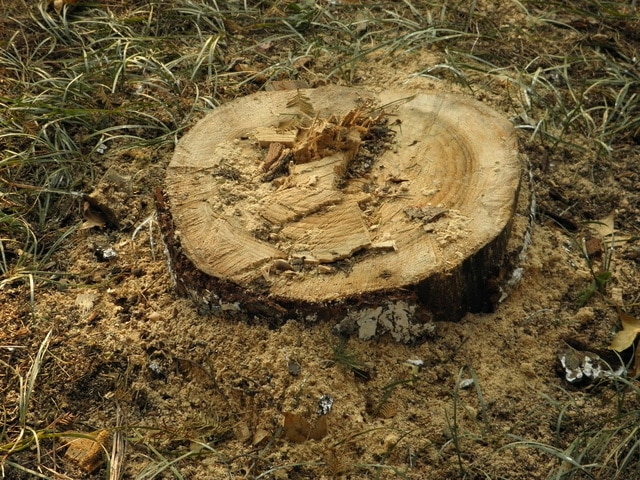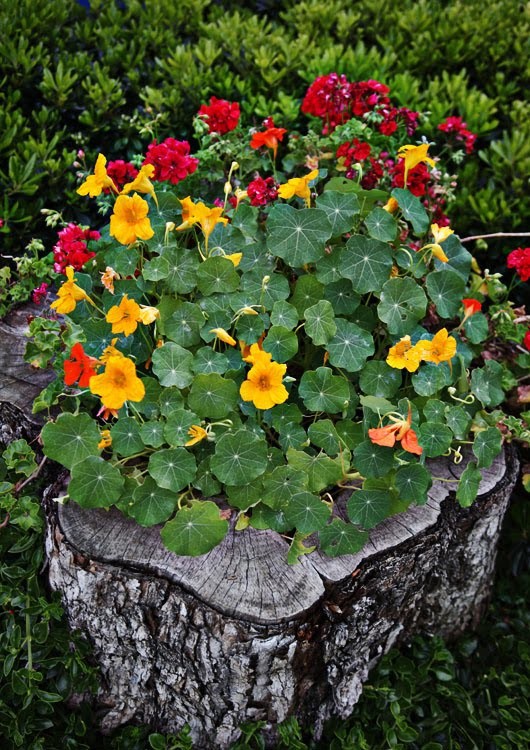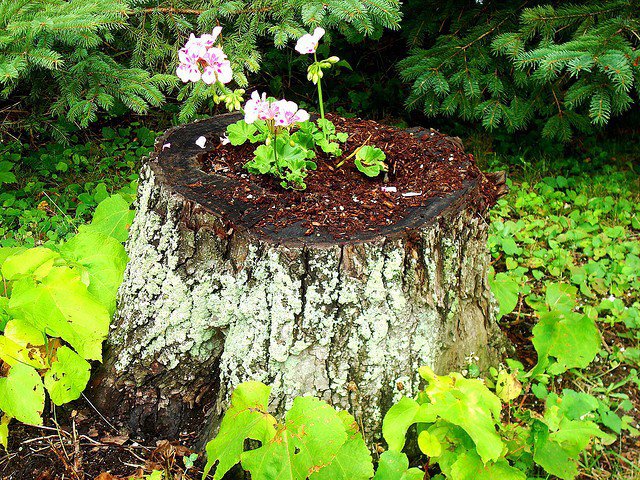If you’ve ever had to remove a tree, you know how much work taking out the stump can be. Many gardeners find it easier (and less expensive) to leave the stump, while some go a step further and plant in it. Tree-stump planters add a touch of whimsy to the garden and make great focal points.
You may even find that you like the look so much that you want to add additional tree-stump planters to your landscape. Such planters are made from the trunks of trees.
Here are some tips for creating a tree stump planter for your yard this summer.
Hollow out the stump. If a tree stump is new, it will take more work to create a container out of it, as the wood will still be green. Tree stumps that have deteriorated for some time will be easier to hollow out. Either way, you’ll need a mattock or pickaxe to create a planting cavern. Wear safety glasses when you hollow out the stump.

After you’ve created a hollow in the stump that is at least 6 to 10 inches deep and wide, use a drill to make ½- to 1-inch in diameter drainage holes. Space the holes 3 to 4 inches apart and include holes on the sides near the base of the stump so that the water has a place to drain rather than pooling at the bottom, where it is likely to break down the base of the stump.
Fill the stump with soil. For best growing results, mix 75 percent well-draining potting soil with 25 percent compost. Fill the stump with the mix and then water well to settle. If after watering the soil settles to more than 1 inch below the stump rim, add more soil and water again.
Plant. Anything that grows well in a container will thrive in a tree stump planter. Plant annual or perennial flowers or small shrubs. To create a stunning focal point, combine three types of plants in the stump. Start by planting something tall and upright, like Echinacea, in the center of the stump. Surround that plant with medium to low-growing plants like geranium, and then fill the edges with trailing plants that spill over the sides of the stump planter, like lobelia.
 ( Landscaping Plants Nursery)
( Landscaping Plants Nursery)Whatever plants you do choose, make certain they are compatible in terms of required lighting.
Maintenance. Treat a stump planter as you would any container garden. Keep the soil moist but not soggy. Feed the plants every two weeks with an organic all-purpose fertilizer throughout the rest of summer and into early fall.
Julie Bawden-Davis is a garden writer and master gardener, who since 1985 has written for publications such as The American Gardener, Organic Gardening, Wildflower, Better Homes and Gardens and The Los Angeles Times. She is the author of seven books, including Reader’s Digest Flower Gardening, Fairy Gardening, The Strawberry Story, and Indoor Gardening the Organic Way, and is the founder of HealthyHouseplants.com.

